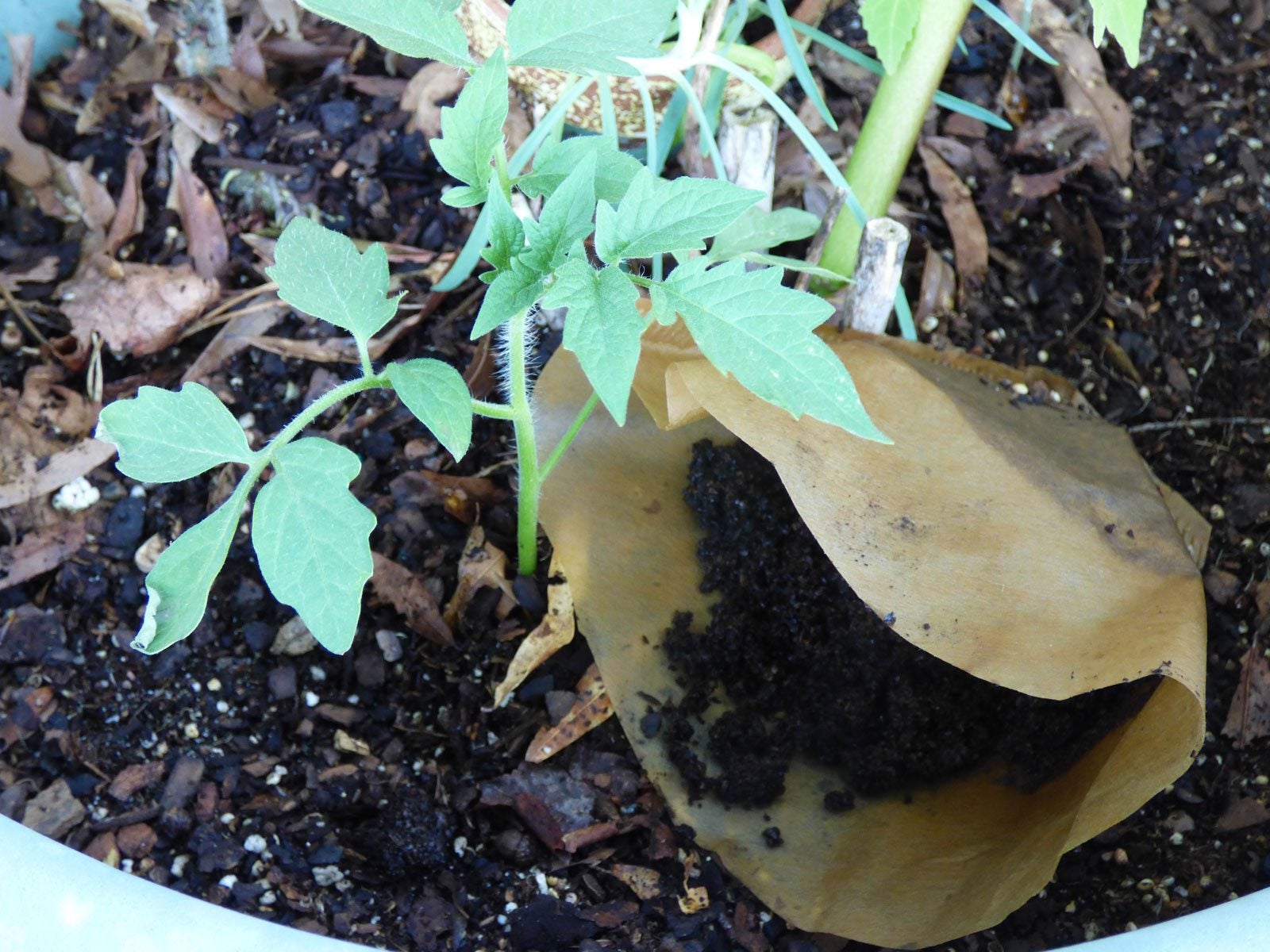Can You Grow Vegetables In Coffee Grounds: Using Coffee Grounds In Your Vegetable Garden

For a diehard coffee drinker like me, a cup of Joe is a necessity in the morning. As I am a gardener, I’ve heard tales about using coffee grounds in your vegetable garden. Is this a myth, or can you grow vegetables in coffee grounds? Read on to find out if coffee grounds are good for vegetables, and if so, all about growing veggies in coffee grounds.
Can You Grow Vegetables in Coffee Grounds?
It’s true fellow coffeeholics! You can use coffee grounds for vegetables. Our morning elixir is not only a morning perk but can be beneficial to our gardens too. So how are coffee grounds good for vegetables? I’m sure many of us consider coffee to be acidic but that is actually a fallacy. The grounds are not all that acidic; in fact, they are close to pH neutral-- between 6.5 and 6.8. How can this be, you ask? The acidity in coffee is restricted to the brew itself. Once water passes through the grounds when percolating, it essentially flushes most of the acid out. Coffee grounds also contain 2 percent nitrogen by volume but that doesn’t mean they can replace a nitrogen rich fertilizer. So how do you use coffee grounds for vegetables?
Growing Veggies in Coffee Grounds
Too much of anything can careen onto negative ground. This is true of using coffee grounds in your vegetable garden. To use the grounds in your garden, incorporate about 1 inch (2.5 cm.) (up to 35 percent grounds to soil ratio) directly into the soil or spread the grounds directly onto the soil and cover with leaves, compost, or bark mulch. Till the coffee grounds into the soil to a depth of between 6 and 8 inches (15-20 cm.). What will this do for the veggie garden? It will improve the availability of copper, magnesium, potassium, and phosphorus. Also, each cubic yard (765 l.) of grounds affords 10 pounds (4.5 kg.) of slowly released nitrogen to be available to the plants over a long time period. Additionally, the nearly infinitesimal acidity may benefit alkaline soils, as well as acid loving plants like camellias and azaleas. All in all, coffee grounds are good for vegetables and other plants, as they encourage the growth of microorganisms in the soil and improve tilth.
Other Uses for Coffee Grounds in the Garden
Coffee grounds aren’t just for growing vegetables, they make a great addition to the compost or worm bins. In the compost pile, layer one-third leaves, one-third grass clippings, and one-third coffee grounds. Throw in the coffee filters too as an added carbon source. Tear them up first to hasten decomposition. Don’t add more than 15 to 20 percent of the total compost volume or the compost pile may not heat up enough to decompose. It may take three months or longer for it to completely decompose. Worms apparently have a weakness for coffee as well. Again, too much of a good thing can turn against you, so add just a cup or so of the grounds each week or every other week. Use coffee grounds as a snail and slug barrier. The grounds are abrasive much like diatomaceous earth. Make a coffee ground infusion to use as a liquid fertilizer or foliar feed. Add 2 cups (.47 L.) of coffee grounds to a 5 gallon (19 L.) bucket of water and let it steep for a few hours to overnight. If you are an avid coffee consumer and/or you are getting large quantities of grounds from a local coffee shop, store them in a plastic trash bin until you can use them.
Sign up for the Gardening Know How newsletter today and receive a free copy of our e-book "How to Grow Delicious Tomatoes".

Amy Grant has been gardening for 30 years and writing for 15. A professional chef and caterer, Amy's area of expertise is culinary gardening.
